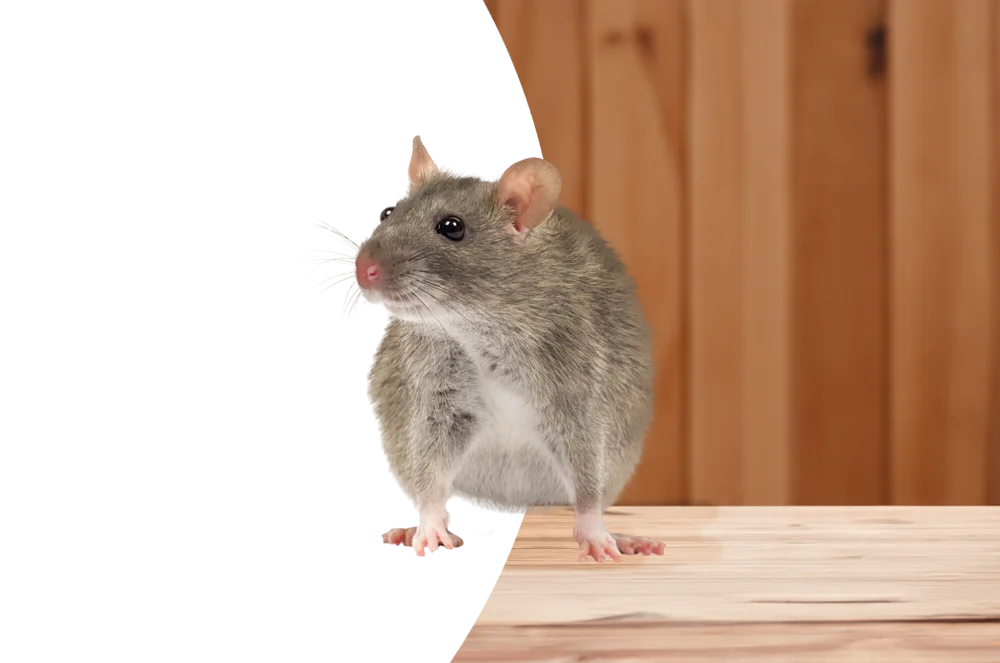Rodent Mazes
Overview
Rats and mice, widely-utilized animal models in research, share similarities in some aspects. Known for their genetic similarity to humans, these rodents are extensively employed in various scientific studies. Unlike other animal models like Drosophila, rats and mice offer unique advantages such as their larger size and physiological similarities to humans. Their widespread use in research is attributed to these characteristics, making them preferred choices for studies ranging from disease models to behavioral research.

ConductVision: Advanced Behavioral Tracking for Research
ConductVision is an innovative software solution designed for precise behavioral tracking and analysis in animal research.
Key Features of ConductVision:

Automated Tracking

Multi-Species Compatibility

Customizable Parameters

Real-Time Data Visualization

Rodents Behaviors and Characteristics
Scientific Classification
Social Behavior: | They engage in behaviors such as grooming; play; and hierarchical interactions within their groups |
Reproductive Patterns: | These rodents have prolific reproductive capabilities; with short gestation periods and large litter sizes; making them useful for studying reproductive biology and genetics. |
Habitat: | Rats and mice demonstrate cognitive abilities such as learning; memory; and problem-solving |
Disease Models: | Rodents are widely used to model various human diseases such as cancer; cardiovascular diseases; diabetes; and neurological disorders. |
Genetic Manipulability: | Rats and mice are amenable to genetic manipulation; this makes them invaluable for investigating the roles of specific genes in health and disease. |
Behavioral Studies: | Researchers utilize rodents to investigate a wide array of behaviors; including anxiety; depression; addiction; and social behaviors.. |
Practical Considerations: | Rodents are relatively easy to house and maintain in laboratory settings. They have a short lifespan; facilitating longitudinal studies within a reasonable timeframe. |
History
Mice and rats, originally domesticated thousands of years ago, have adapted to diverse environments globally and have played crucial roles in scientific research since the early 20th century. Notably, their utility was underscored by pioneering genetic studies conducted by researchers like Clarence Little and Halsey J. Bagg at the Jackson Laboratory in the 1900s (Little, 1915; Bagg, 1921). Throughout the mid-20th century, rodents became increasingly prominent in biomedical research (Hansen & Spuhler, 1984), but it was not until the advent of genetic engineering in the 1980s that their importance in genetics truly burgeoned.
A pivotal figure in promoting mice and rats as premier genetic models was American biologist Douglas Coleman. Coleman’s groundbreaking research on the genetics of obesity using mice models laid the foundation for understanding metabolic disorders (Coleman, 1973; Coleman & Hummel, 1973). His work, alongside that of others like Mario Capecchi and Oliver Smithies, established rodents as indispensable tools in gene targeting and disease modeling (Capecchi, 1989; Smithies et al., 1985).
The development of knockout mice technology in the 1990s by Capecchi, Martin Evans, and Oliver Smithies revolutionized genetic research. This technology allowed researchers to selectively disable specific genes in mice, elucidating their roles in health and disease (Evans & Smithies, 1989). These efforts culminated in the completion of the mouse genome project in 2002 (Mouse Genome Sequencing Consortium, 2002), a monumental achievement in genetic research.
Today, mice and rats remain cornerstones in biomedical research, offering unparalleled insights into genetics, disease mechanisms, and therapeutic interventions. Their ease of breeding, genetic manipulability, and physiological similarities to humans make them ideal models for studying complex biological processes and developing new treatments for human diseases.
Training Considerations and Best Practices
Training rodents, such as rats and mice, for research purposes involves careful consideration of ethical guidelines and best practices to ensure their welfare and the reliability of experimental outcomes. Here are some key considerations and practices:
Ethical Guidelines: Adhere to institutional and regulatory guidelines (e.g., IACUC in the United States) for the ethical use of animals in research. Ensure that all procedures are approved and monitored to minimize discomfort and distress.
Handling and Habituation: Proper handling techniques are essential to minimize stress and ensure the safety of both the researcher and the animal. Habituate rodents to human handling gradually to reduce fear responses.
Environmental Enrichment: Provide a stimulating environment to enhance welfare and reduce stereotypic behaviors. This includes providing nesting materials, toys, tunnels, and opportunities for social interaction where applicable.
Positive Reinforcement: Use positive reinforcement techniques, such as food rewards or access to preferred environments, to train rodents for specific tasks or behaviors. This can include operant conditioning for tasks like maze navigation or lever pressing.
Task-Specific Training: Train rodents gradually and systematically for specific experimental tasks. Break down complex tasks into smaller steps and reward incremental progress to facilitate learning and ensure task proficiency.
Consistency and Reproducibility: Maintain consistent training protocols and environmental conditions to ensure reproducibility of results across experiments and between researchers.
Health Monitoring: Monitor the health and well-being of rodents regularly. This includes observing for signs of distress, illness, or abnormal behavior, and promptly addressing any health concerns.
Record Keeping: Maintain detailed records of training protocols, experimental procedures, and animal observations. This documentation is crucial for tracking progress, analyzing results, and ensuring compliance with regulatory requirements.
Training Documentation: Document the training progress of individual animals, including their performance in tasks, responses to stimuli, and any deviations from expected behaviors. This information helps in interpreting experimental outcomes and refining training methods.
Continual Assessment and Improvement: Continually assess and refine training techniques based on individual animal responses and experimental outcomes. Incorporate feedback from colleagues and experts in the field to improve training practices.
Rodent Behavioral Testing Equipment for Sale
At ConductVision, we offer a range of behavioral testing solutions tailored for rodent research laboratories:

Open-Field Testing Systems
Assess general locomotion, anxiety, and exploration in rodents.

Operant Conditioning Chambers
Study learning, motivation, and reinforcement behavior with automated stimulus-response systems.

Morris Water Maze & Radial Arm Maze
Conduct spatial learning and memory tests with precision tracking.

Elevated Plus Maze & Light-Dark Box
Evaluate anxiety-related behaviors in preclinical models.
Rodents in Research
Rodents, especially mice and rats, share a high degree of genetic similarity with humans, making them valuable models for studying human biology, genetics, and disease mechanisms.
They are extensively used to model human diseases such as cancer, cardiovascular diseases, diabetes, neurodegenerative disorders, and more. This allows researchers to investigate disease progression, develop treatments, and test potential therapies.
Rodents serve as important models for evaluating the efficacy, safety, and toxicity of pharmaceuticals, chemicals, and environmental toxins before human trials.
Compared to larger animals, rodents are relatively inexpensive to house, breed, and maintain in laboratory settings. This makes them practical for large-scale studies and experiments.
Researchers adhere to strict ethical guidelines and regulatory standards to ensure the humane treatment and welfare of rodents used in research. Measures are taken to minimize pain, distress, and discomfort.
Advances in technologies such as optogenetics, imaging techniques, and behavioral assays further enhance the utility of rodents in cutting-edge research.
Overall, rodents are indispensable in advancing our understanding of basic biological processes, disease mechanisms, and therapeutic interventions, contributing significantly to biomedical and scientific progress.
